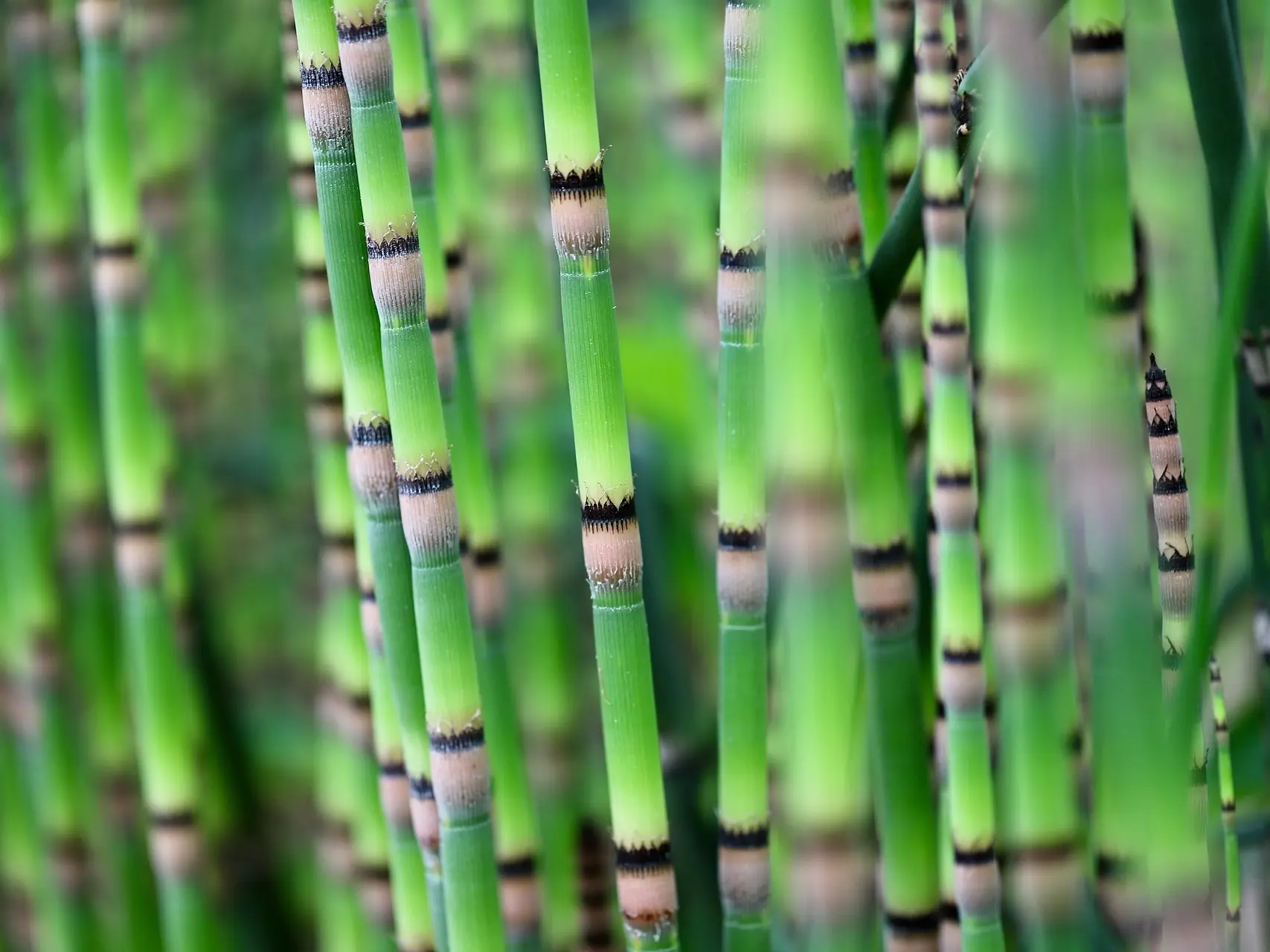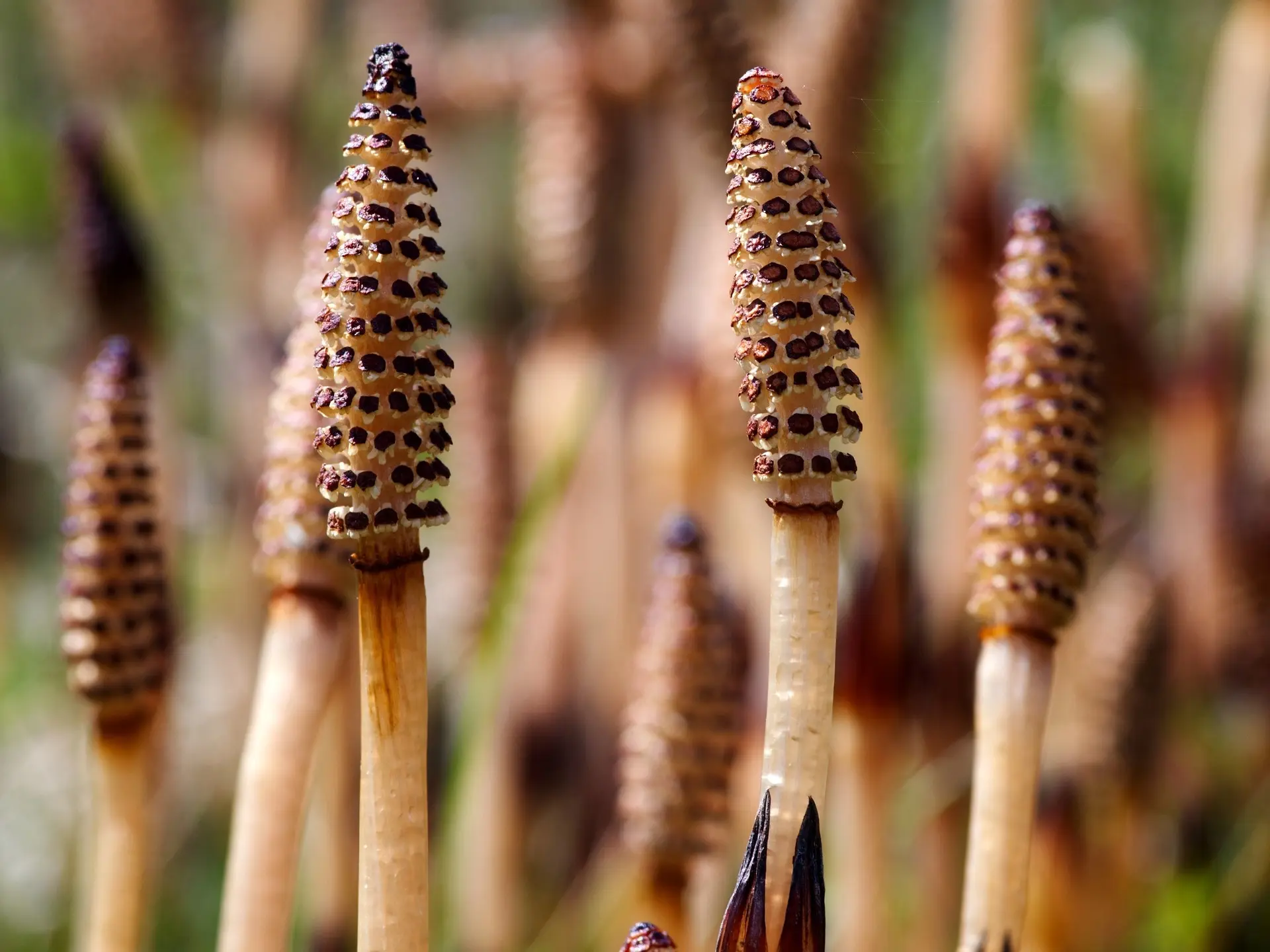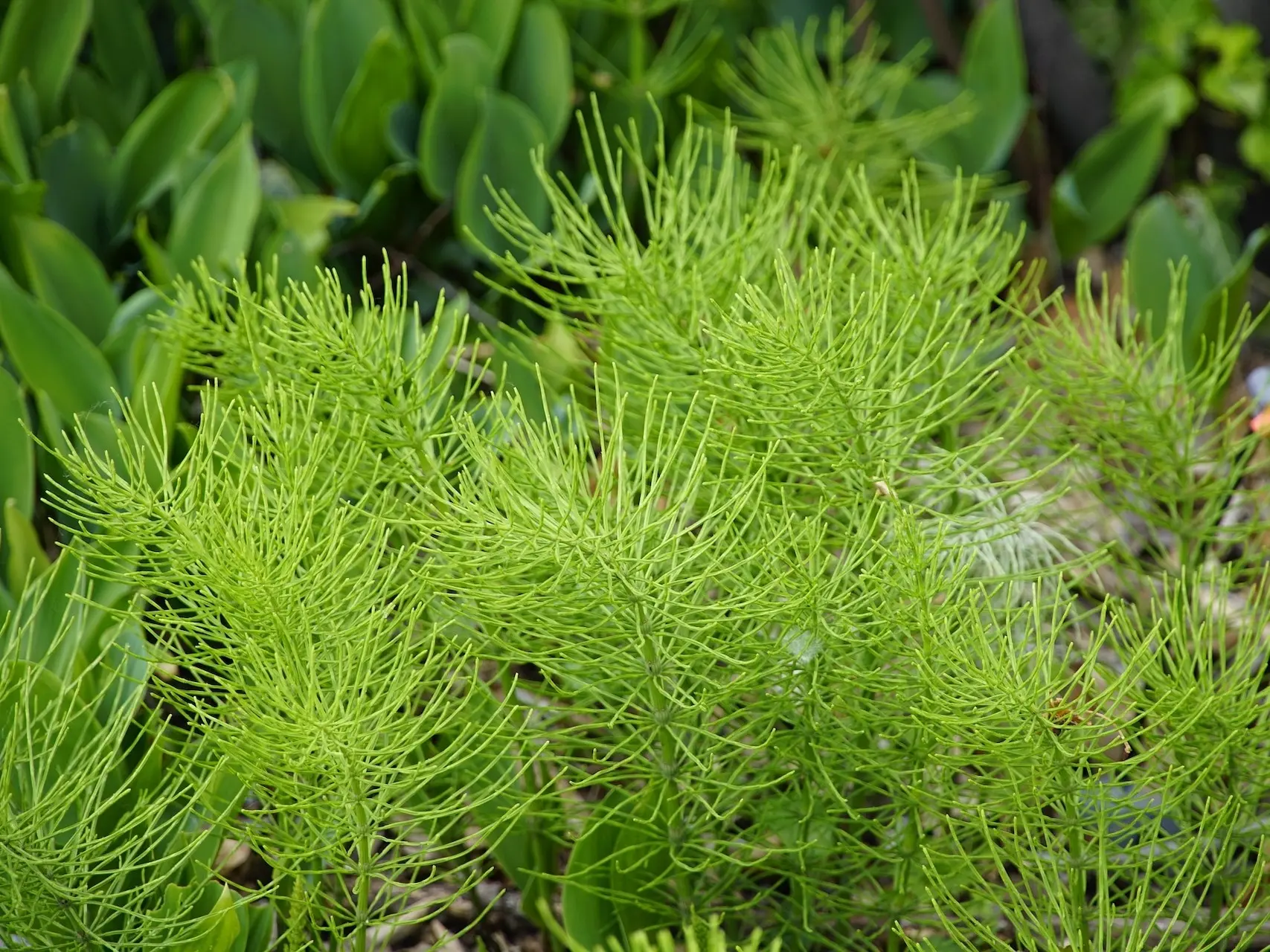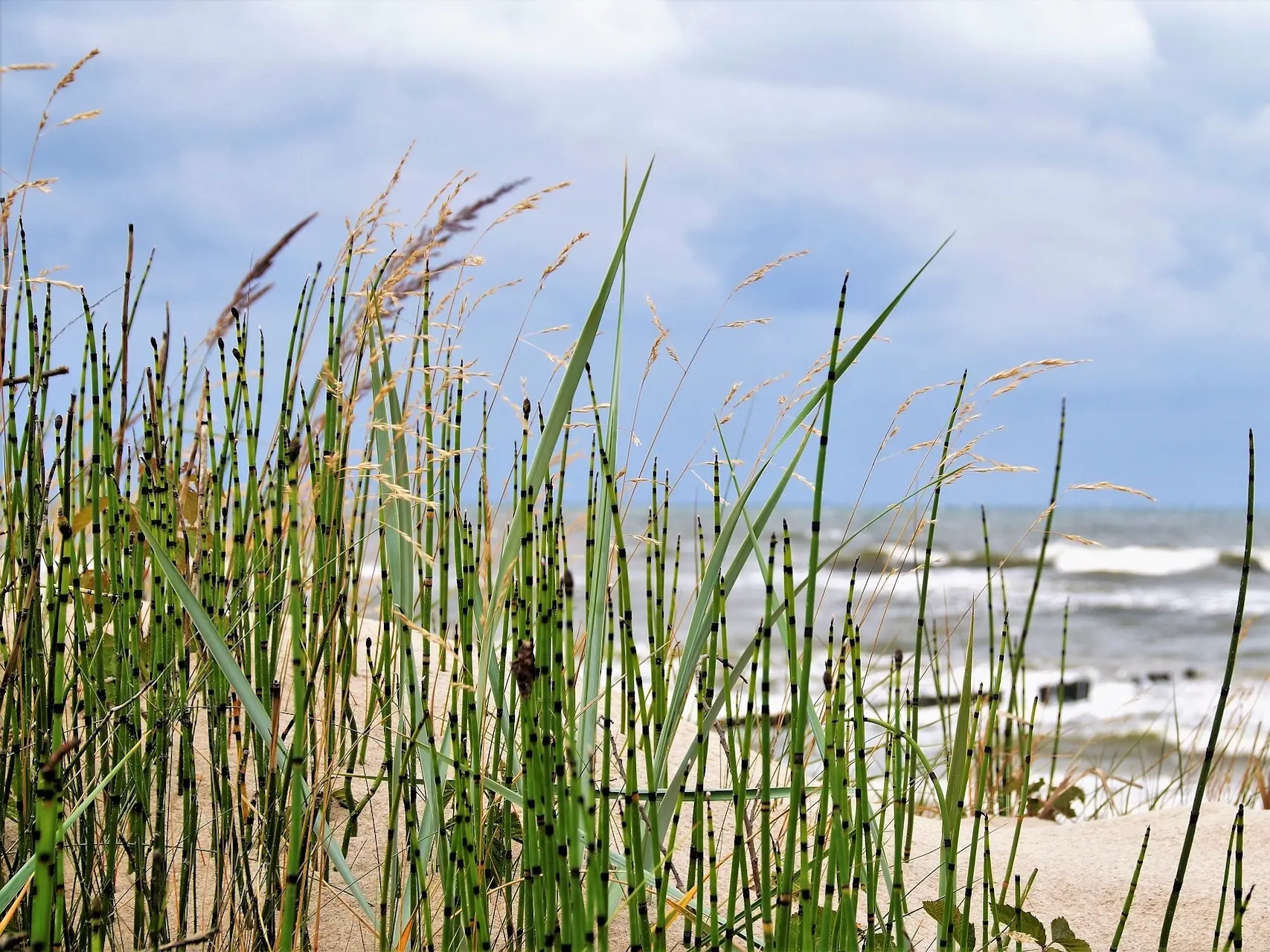
Names
Equisetum Species, Horsetail, Scouring Rush
Description
Both a perennial and an annual that grows to 6 feet, with two types of stems. Sterile stems are light green with many branches and no leaves. Fertile stems are singular, darker green, ridged, hollow, with distinct joints. Young shoots appear with a tan spore cone on the end.

Concern Level
Only during drought conditions, unpalatable, can be incorporated into hay.
Toxic Parts
All parts of the plant are toxic, fresh or dried.

Symptoms
Jaundice, weight loss, general weakness, lack of coordination, anxiety and paralysis, convulsions and death.
Danger
Contains Thiaminase that breaks down thiamine, which affects central nervous system and metabolism. Especially dangerous to young horses, can be fatal.

More Information
*It should be noted that we are not veterinarians. This information is written specifically for horses and should be used for reference purposes only. If you think your horse has eaten something toxic call your vet right away.